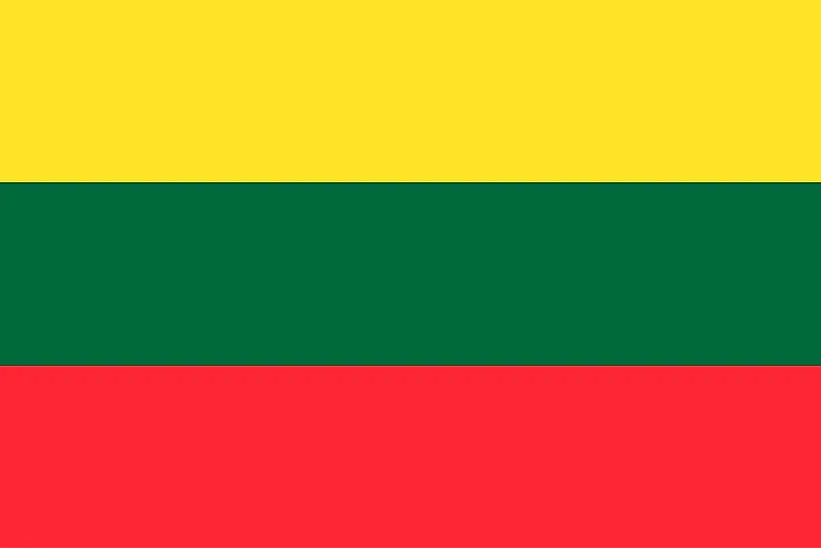
Lithuania
| Continent | Europe |
| Capital | Vilnius |
| Population | 2,854,235 |
| GDP | $85.62 Billion |
| GDP per Capita | $29,900 |
| Dialing Code | +370 |
| ISO Code (2-letter) | LT |
| ISO Code (3-letter) | LTU |
Lithuania Landscapes






About Lithuania
Welcome to Lithuania, a nation where ancient Baltic traditions meet modern European dynamism. With approximately 2.8 million people occupying 65,300 square kilometers, Lithuania combines remarkable cultural heritage with technological advancement, standing as the largest of the Baltic states.
Geographic Features and Natural Beauty
Lithuania’s geography encompasses diverse landscapes, from the Baltic Sea coast with its famous Curonian Spit to vast forests covering one-third of the country. The terrain is predominantly flat, with gentle hills and numerous lakes formed by glacial activity.
The landscape includes over 6,000 lakes, 758 rivers, and extensive wetlands. The country’s varied topography supports rich biodiversity, particularly in its old-growth forests and coastal ecosystems.
Protected areas include the Curonian Spit National Park, a UNESCO World Heritage site shared with Russia, and the Žemaitija National Park, preserving unique lake landscapes. The country’s commitment to environmental protection has resulted in well-preserved natural habitats.
Cultural Heritage and Traditions
Lithuanian culture represents one of the oldest living Indo-European traditions. The country’s heritage includes unique folk songs called dainos, traditional cross-crafting recognized by UNESCO, and a rich mythology preserved through generations.
Traditional arts include amber crafting, wood carving, and textile weaving, particularly the creation of traditional sashes. Music traditions feature sutartinės (unique polyphonic songs) and folk instruments like the kanklės.
Lithuanian cuisine features hearty dishes like cepelinai (potato dumplings) and šaltibarščiai (cold beetroot soup). The tradition of brewing craft beer and making black rye bread remains central to cultural identity.
Historical Journey
Lithuania’s history spans from its formation as a Baltic tribe confederation to the powerful medieval Grand Duchy, through various occupations to its modern independence. The country was once Europe’s largest state during the 14th-16th centuries.
Significant periods include the formation of the Grand Duchy of Lithuania, the Polish-Lithuanian Commonwealth, Russian Imperial rule, independence between World Wars, Soviet occupation, and the restoration of independence in 1990. Lithuania’s role in the collapse of the Soviet Union through the Baltic Way demonstration remains historically significant.
Modern Economic Landscape
Today’s Lithuanian economy combines traditional industries with growing sectors in fintech, IT, and biotechnology. The country has become a regional hub for startups and digital innovation.
Recent initiatives focus on digital transformation, green energy development, and strengthening its position as a fintech center. Lithuania’s educated workforce and strategic location support its emerging role as a Northern European innovation hub.
International Relations and Global Position
Lithuania maintains active participation in the European Union and NATO while serving as a bridge between Western Europe and the Baltic region. The country’s expertise in cybersecurity and digital governance contributes to international cooperation.
Did You Know?
• Lithuania was the last pagan country in Europe, officially converting to Christianity in 1387?
• The geographical center of Europe is located in Lithuania, near Vilnius?
• Basketball is often considered Lithuania’s second religion?
• The country has one of the fastest public Wi-Fi networks in the world?
Conclusion
Lithuania represents a unique combination of ancient heritage and modern innovation. From its amber crafts to its digital startups, from its folk traditions to its fintech leadership, Lithuania continues to evolve while preserving its distinctive cultural identity. As it addresses contemporary challenges including demographic change and technological transformation, Lithuania remains committed to its role as a dynamic European nation while maintaining its unique Baltic heritage.